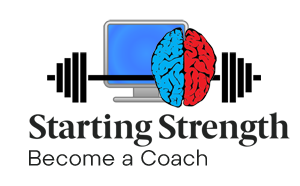The hip crease serves as the proxy for the acetabulum. Literally, you're just looking for the crease of the hip as the lifter squats down. This gets tough with overweight lifters who have giant thighs and butts, but it generally works well all the time. You're right that certain clothes can make it tougher, but there are other indicators of proper depth that can give you a better overall picture - like the knee angle, for instance.
Maybe I'm not understanding your question, though. See the pictures below. These are all to depth.
Screen Shot 2019-11-23 at 9.11.27 PM.jpgScreen Shot 2019-11-23 at 9.11.45 PM.jpgScreen Shot 2019-11-23 at 9.12.14 PM.jpgScreen Shot 2019-11-23 at 9.13.14 PM.jpg








 Reply With Quote
Reply With Quote

